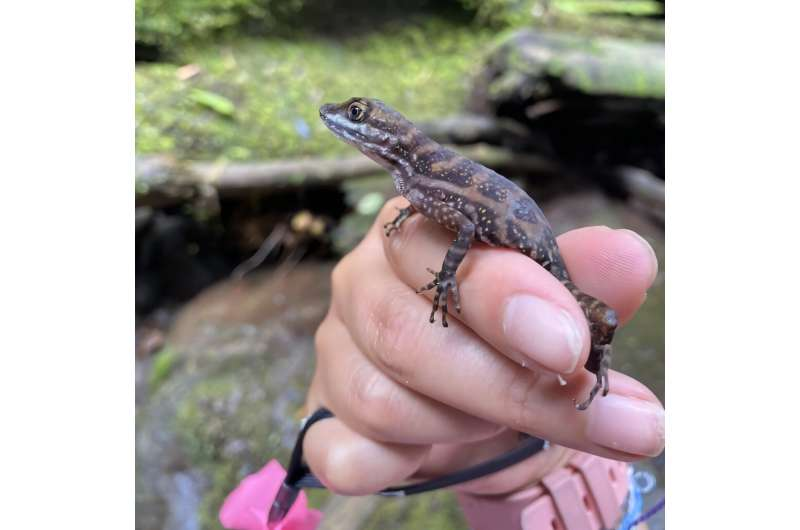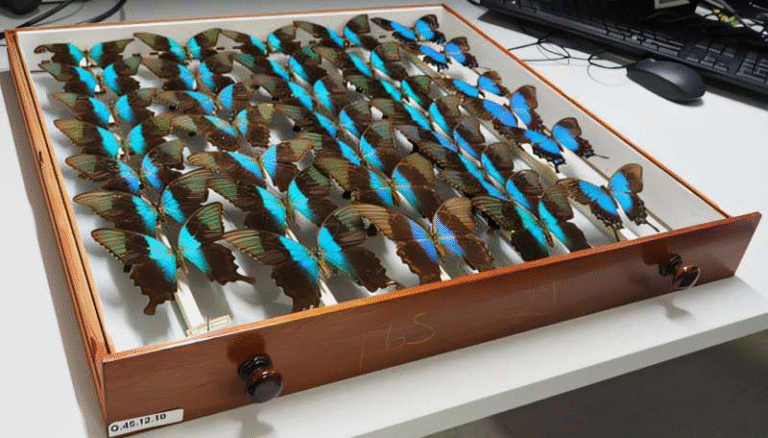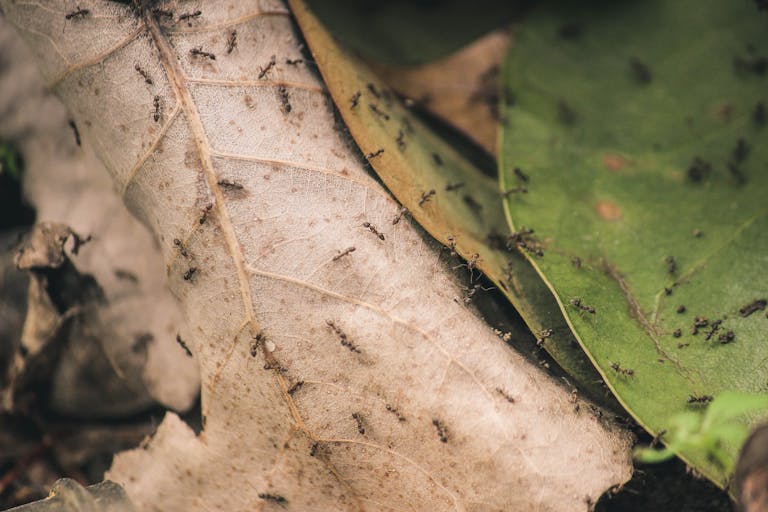Color-Changing Water Anoles Reveal Hidden Clues About Their Health and the Environment

Water anoles, or Anolis aquaticus, are small lizards that live along fast-flowing streams in Costa Rica and Panama, often seen perched on rocks or tree roots beside waterfalls. These reptiles have always intrigued biologists because of their remarkable ability to breathe underwater for several minutes, using air bubbles that cling to their snouts like natural scuba tanks. But now, a new study has uncovered another fascinating trait—these lizards’ skin color changes may actually reveal their health and physical condition, offering insights into both their biology and the ecosystems they inhabit.
What the Study Found
The research was led by Kelly Lin Wuthrich, a Ph.D. candidate at Florida International University (FIU), working under evolutionary biologist Christian Cox at the university’s Institute of Environment. The study, published in the Biological Journal of the Linnean Society in 2025, focused on female water anoles—a group that hasn’t received much attention compared to the more flamboyant males.
Wuthrich’s work set out to understand whether changes in female coloration had any significance beyond the usual role of camouflage. Most people assume that male lizards are the ones using bright colors for communication and courtship, while females are duller and less expressive. But this new research shows that assumption isn’t entirely true.
By observing and photographing females in controlled conditions and in the wild, the researchers discovered that females in better physical condition showed bluer, less green lateral stripes along their bodies. These bluer tones seem to act as indicators of vitality, suggesting that color variation in female water anoles may serve as a visual signal of their health, reproductive readiness, or fitness.
Interestingly, the study also found that rapid color changes—when females adjusted their overall body color in response to a new environment—occurred regardless of whether other lizards were present. This means that the quick shifts in hue weren’t primarily social signals, but rather reactions to environmental factors such as light, temperature, or stress.
Why It Matters
The discovery that color variation in female water anoles reflects their body condition challenges the long-standing assumption that females play a passive role in animal signaling systems. Instead, this finding suggests that even subtle color patterns in females can carry important biological messages.
For Wuthrich and her team, these results extend beyond behavior and into ecology. Because coloration depends heavily on an animal’s health and habitat, shifts in hue could also reflect environmental stress—for example, changes in temperature, pollution, or food availability. If female anoles’ colors become less vibrant or more irregular, it might indicate ecosystem disturbances affecting their well-being.
In this way, water anoles could act as bioindicators, species whose physical traits reveal clues about the health of the environment. Given that these lizards live in fragile streamside habitats, monitoring their coloration could even help track broader changes in tropical forest ecosystems.
How the Research Was Done
Wuthrich used digital photography and color analysis software to precisely measure the color spectrum of the lizards’ skin under different conditions. She also tested how the lizards’ hues would appear through anole vision—since reptiles perceive colors differently than humans.
To separate environmental effects from social ones, the researchers compared color changes when females were kept alone versus with other anoles. They found no major difference between the two scenarios, reinforcing that environmental context and individual condition drive the color shifts rather than social signaling.
The study’s title, “Colour-changing signals are independent of social interactions, but may signal body condition in an Anolis lizard,” sums it up perfectly. The results indicate that the bluer the stripe, the better the body condition, while environmental changes can temporarily alter hues regardless of social context.
The Bigger Picture: Why Anoles Are So Interesting
The genus Anolis is one of the most diverse vertebrate groups on Earth, with over 400 species distributed across Central and South America, the Caribbean, and parts of the United States. These lizards have become a cornerstone of evolutionary biology, particularly for understanding adaptive radiation—how species diversify and evolve to fill different ecological niches.
Anoles vary widely in size, shape, color, and behavior, and many can change color within seconds. This ability serves several purposes:
- Camouflage – blending into foliage or rocks to evade predators.
- Thermoregulation – darkening or lightening to absorb or reflect heat.
- Communication – signaling aggression, submission, or courtship readiness.
In male anoles, bright colors often appear in the dewlap, a flap of skin beneath the throat used in territorial and mating displays. However, female coloration has traditionally been considered secondary or non-communicative. Studies like Wuthrich’s challenge this outdated notion, suggesting that females also use color for fitness signaling and possibly even for female-to-female communication.
Stress and Color Change
One of the intriguing findings of this research is how stress affects coloration. The vibrant hues that indicate a healthy, well-fed female fade quickly under stress—whether from poor nutrition, environmental disturbance, predator encounters, or the energy demands of egg production. This fading happens within hours or even minutes, showing just how sensitive these animals are to changes in their surroundings.
As Wuthrich points out, even small shifts in environment can influence a lizard’s ability to blend in, potentially making them more visible to predators or disrupting their natural behavior. For species like water anoles that rely heavily on both camouflage and color signaling, environmental instability could have serious consequences.
What Comes Next
The study opens the door for new research questions. For example, could color shifts also play a role in female-female interactions—helping lizards establish territories or dominance hierarchies? Wuthrich plans to explore this in future fieldwork, potentially returning to Costa Rica to continue her observations of these elusive reptiles.
With so many species of anoles across the Americas, each adapted to different environments, studying how color variation evolved could provide deeper insights into evolutionary biology, sexual selection, and species communication.
Why This Study Stands Out
What makes this research particularly valuable is how it connects individual physiology with broader ecological patterns. The color of a single lizard’s stripe can tell a story not only about that animal’s health but also about the health of the forest it lives in.
Understanding these patterns matters because tropical ecosystems like those in Costa Rica are under increasing pressure from deforestation, pollution, and climate change. A species as sensitive and visually expressive as the water anole might be one of the best natural indicators of how those changes ripple through the environment.
The findings also highlight a broader shift in biology—recognizing that females are not merely passive participants in evolution. Female traits, even when less conspicuous, often play critical roles in survival, reproduction, and communication.
The Takeaway
This new research shows that color is more than decoration in the animal kingdom—it’s information. For water anoles, those subtle shifts in hue aren’t random or cosmetic. They reflect a complex mix of biology, behavior, and environment, giving scientists a new window into how living things interact with their surroundings.
In short, the next time you see a lizard shimmering with shades of blue and green, remember: it might just be telling you how it’s feeling—and how its world is changing.
Research Reference: Colour-changing signals are independent of social interactions, but may signal body condition in an Anolis lizard – Biological Journal of the Linnean Society (2025)





